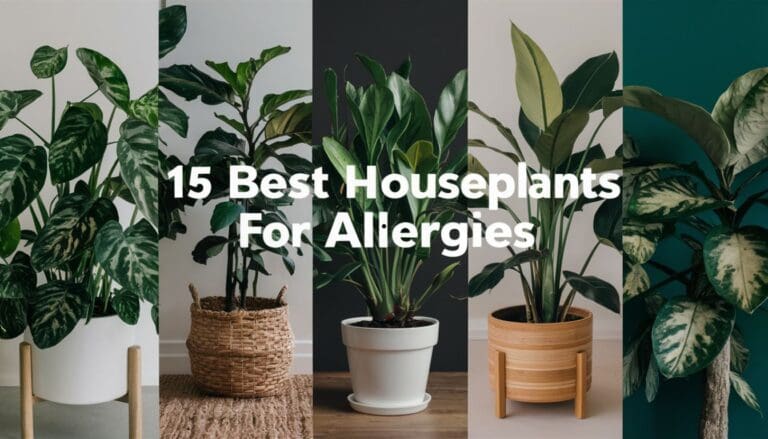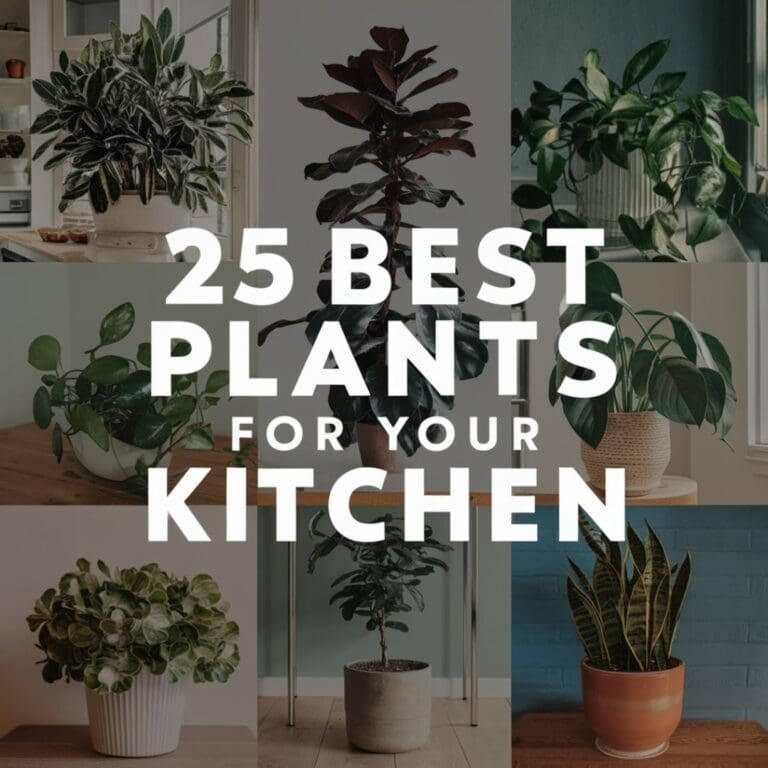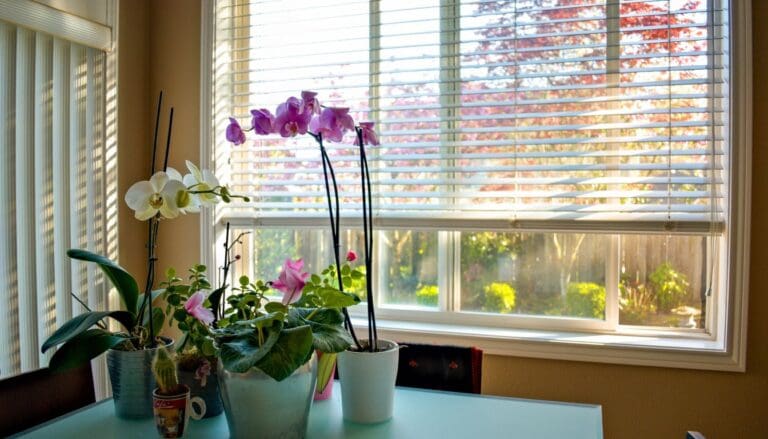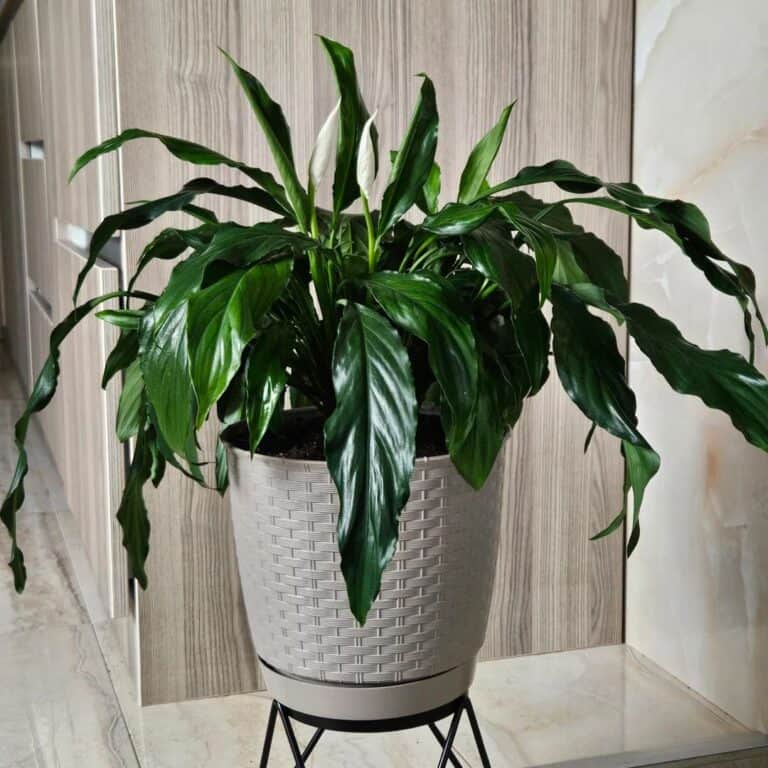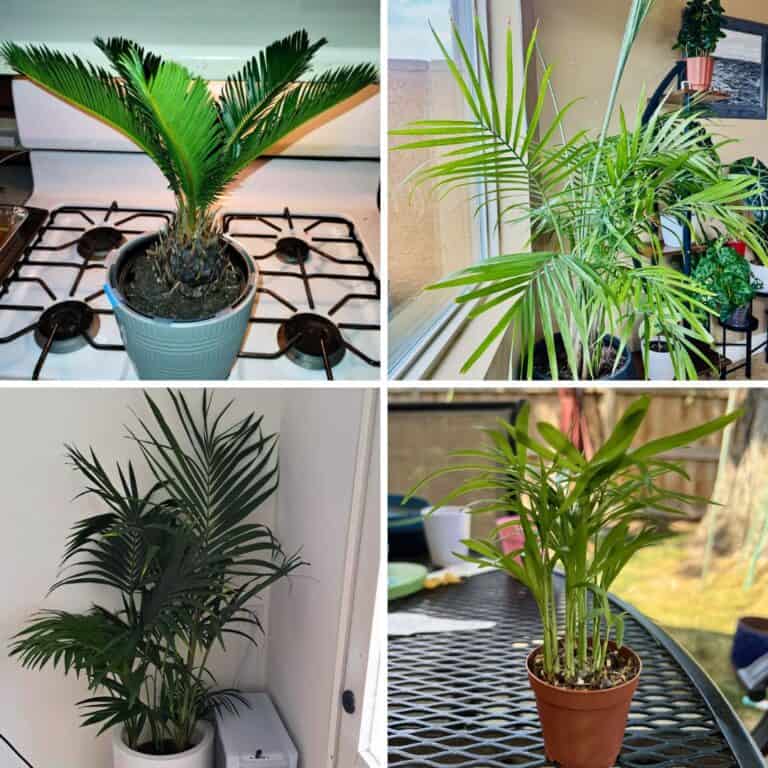10 Tiny Houseplants That Fit Anywhere
I really enjoy sneaking a bit of nature into my home, even if I barely have any space to spare.
Tiny houseplants are just the thing for adding a splash of green without crowding the room.
Whether I’m in a snug apartment or just want to liven up a dull corner, these plants squeeze in almost anywhere.
Honestly, I always feel a little happier when there’s some fresh greenery around.
Please note: Simplify Plants is reader-supported. As an Amazon Associate, I earn from qualifying purchases made by our readers with no extra cost added to you all! Some links in the post are affiliate links and I get a commission from purchases made through links in the post.
1) Baby Tears Plant

The Baby Tears plant brings a soft, delicate vibe to any space. Its tiny round leaves cluster together, making a thick green mat that almost looks like moss.
It stays small, so I can tuck it onto a windowsill, desk, or even a cramped shelf. The leaves don’t need much space, which is perfect for apartments, dorms, or honestly, any spot that’s a bit tight.
Baby Tears likes bright but indirect sunlight. I keep mine out of harsh afternoon rays since the leaves dry out pretty fast. Still, it needs some light, so a spot near a window is usually just right.
Humidity is its friend. I’ll mist it lightly when the leaves start looking a bit dry, and I try to keep the soil damp but never soggy.
This plant looks great solo or mixed with other tiny houseplants. The trailing stems can spill over the pot, which I think looks really cute in a tiny hanging planter.
Baby Tears is an easy plant to care for as long as you stay on top of watering and find a nice spot for it. A little attention really keeps it looking perky.
Since it never gets too big, I never have to stress about it outgrowing its spot. It just quietly fits wherever I want a pop of green.
2) String of Pearls

The String of Pearls is honestly one of the most unique-looking plants out there. Those round, green beads really catch the eye, even if you only have a tiny space.
It’s perfect for small spaces. I’ll hang it or let it drape off a shelf, and its long stems just spill down without hogging any room.
Caring for String of Pearls is pretty straightforward. I only water it when the soil feels dry, and too much water is a no-go—good drainage is key.
Bright, indirect sunlight is best. I usually keep mine near a window but out of direct sun, since those little beads can get scorched.
It’s a slow grower, which means it keeps its petite size and I don’t really have to trim it much. That’s a win for me.
One thing to note: the beads aren’t pet- or kid-friendly, so I always keep mine out of reach just in case.
String of Pearls is just a fun, quirky choice for small spaces. Its look and easy care make it one of my top picks for tiny homes or apartments.
3) Air Plants (Tillandsia)

Air plants are awesome because they don’t even need soil. I can put air plants pretty much anywhere—on a shelf, in a little glass bowl, or dangling from a string. Their tiny size means I can squeeze them into any nook.
They’re easy to care for. I just soak mine in water for about half an hour once a week, then let them dry upside down so water doesn’t get trapped.
You get all sorts of shapes and colors with these guys. Some are fuzzy, some are smooth—each one’s got its own personality.
I’ll put them in tiny terrariums or stick them onto rocks and driftwood. They brighten up a busy desk or a windowsill and barely need any attention.
Since there’s no soil, I can move them around whenever I want. If I get bored, I just pick them up and find a new spot.
They even clean the air a bit, so they help freshen things up. I think they make any space feel a little more interesting.
4) Pilea Peperomioides

Pilea Peperomioides is probably one of the cutest plants out there. People call it the Chinese Money Plant because of those round, coin-shaped leaves.
It does great in small pots, so I can tuck it onto my desk or a windowsill. Doesn’t need much space, which is just what I want for a small room.
I water it about once a week, making sure the soil dries out before I give it more. It likes bright, indirect light but can handle a bit of shade too.
One thing I really enjoy is how fast it grows. It often pops out little plantlets near the base, and I can share those with friends.
Pilea Peperomioides is safe for pets, which is a relief with my curious cat. I’ll dust the leaves every now and then to keep them shiny.
If the leaves start to droop, it’s usually asking for water or a brighter spot. Once I fix that, it perks right back up.
This tiny plant adds a playful, fresh vibe to my place. Those round leaves just make everything look a bit happier.
5) Fittonia Albivenis

Fittonia Albivenis is a sweet little plant for my windowsill. It’s often called the nerve plant because of those bright white or pink veins crisscrossing its green leaves.
It stays tiny—just a few inches tall—so it’s perfect for desks, shelves, or even the bathroom counter.
Fittonia likes indirect light. Too much sun and the leaves get crispy, but even a shady spot works as long as there’s a bit of light.
I try to keep the soil a little damp, but never soggy. Fittonia loves humidity, so sometimes I’ll mist it or put it near a tray of water.
It’s pretty simple to care for, and it tells me when it’s thirsty—the leaves droop, I water, and they perk up fast.
The soft, patterned leaves add a splash of color to my space. Even in a tiny apartment, there’s always room for Fittonia.
It’s not pet-friendly though, so I keep it out of reach if there are animals around. With a bit of care, my Fittonia stays fresh and colorful all year.
6) Succulent Echeveria

Echeveria is hands down one of my favorite tiny houseplants. It’s small, pretty, and grows in these neat rosettes. The leaves come in all kinds of soft colors—green, pink, even blue sometimes.
They don’t take up much space or need any special care. I can set them on a shelf, desk, or windowsill, and they’re happy with a bit of sun each day.
Echeverias don’t want much water. I only water mine when the soil is bone dry. If you overdo it, the roots can rot—so less is more.
If you’re after a tidy plant that doesn’t attract bugs or drop leaves everywhere, Echeveria is a solid pick. I think the shape just brightens up any spot.
Sometimes, a leaf will fall off and, with a little patience, grow into a new plant. It’s kind of fun to watch.
This plant is great for beginners or anyone who’s just not that into plant care. A small pot is all it needs, and sometimes I’ll even put one in a teacup.
Whenever friends visit, they always ask what it is. People seem to love how unique each one looks. I like that it always stays small and neat.
Caring for Echeveria is honestly a fun, low-stress hobby. It’s low-maintenance but still interesting to watch as it grows and sometimes sprouts new leaves.
7) Miniature Snake Plant
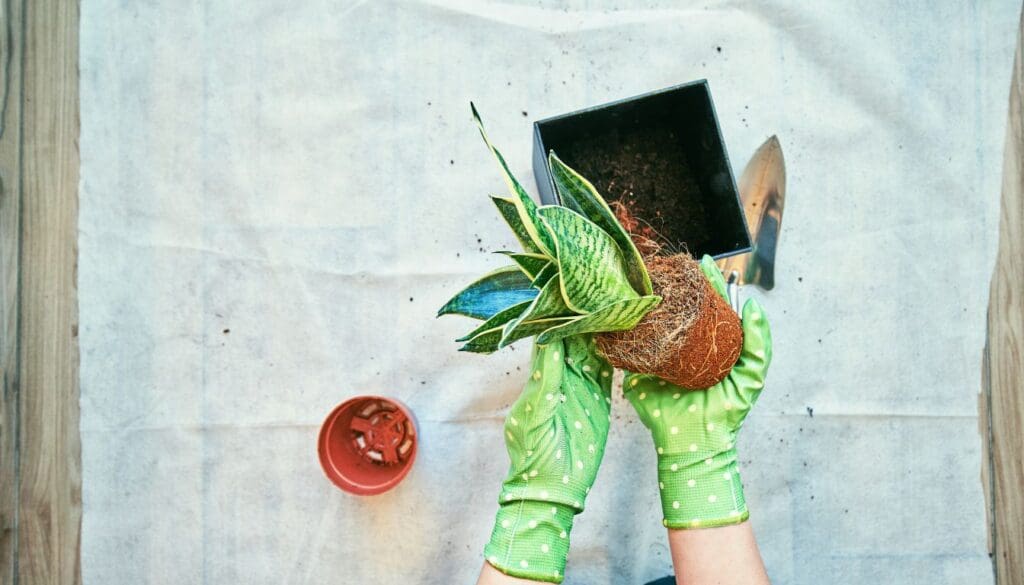
Miniature snake plants are ridiculously easy to care for. They don’t need much water or sunlight, so I can stick them just about anywhere.
Their upright leaves stay neat and compact, which is perfect for small rooms. The leaves are green with yellow edges and look sharp on shelves or desks.
I only need to water mine every couple weeks. Even if I forget, it still seems happy—these plants are tough. Perfect for anyone who’s busy or new to houseplants.
My friends are always surprised the mini snake plant cleans the air a bit, even at its size. I just wipe the leaves down now and then to keep them shiny.
It grows slowly, so I don’t have to mess with repotting all the time. That’s a bonus.
If I want to sneak some greenery into a tight spot, this plant always fits. No fancy pots or special soil needed—just something simple.
For me, the mini snake plant adds a fresh look to my space with zero stress. I’ll put one on a windowsill, a corner table, even in the bathroom. Wherever it goes, it just works.
8) Euphorbia ‘Little Jewel’

The Euphorbia ‘Little Jewel’ is a quirky little plant I really enjoy. It’s got these small green stems that cluster together, almost like a bunch of tiny, upright fingers.
It hardly takes up any space, so I can pop it on my desk or windowsill. Since it stays petite, I never worry about it crowding out my other plants.
Light is important for ‘Little Jewel’. I keep mine near a bright window, but not right in the sun—too much and the tips can brown.
Watering is super simple. I let the soil dry out fully before watering again. Overwatering is pretty much the only way to mess it up.
It’s low-maintenance and doesn’t need much fussing. That’s great for me, especially when things get busy.
Another plus: it’s tough. Pests and diseases don’t seem to bother it much. This plant just quietly does its thing.
Safety tip: I always wash my hands after handling it, since the sap can be a little irritating.
If you want a small, interesting plant that doesn’t need much care, ‘Little Jewel’ is a solid choice. Its simple charm fits anywhere I want a touch of green.
9) Moss Ball (Marimo)

Honestly, I’m a big fan of Moss Balls because they’re just so easy to care for. They’re small, green, and round—kind of cute, actually.
I usually just drop one into a jar or glass of water, and it instantly adds a bit of charm wherever I put it. No soil needed, which is a relief.
Marimo moss balls live happily in plain water. All I really do is change the water every couple of weeks—super low effort.
They grow slowly and stay small, so there’s no surprise overgrowth. Mine sits on my desk, but it could just as easily go on a shelf, windowsill, or even in a fish tank.
They prefer indirect light, not a ton of sun. Too much direct sunlight isn’t good for them, so I keep mine away from harsh rays.
Every now and then, I’ll rotate my moss ball so it keeps its round shape. It’s soft to the touch and brings a calm, green vibe to the room.
Moss Balls are pet-safe, which is a big plus since I have a cat. They’re also fine in aquariums with fish or shrimp.
There’s just something unique about Marimo moss balls—they look different from any other plant I own. If you want a fun, easy plant for a tiny spot, I’d say give these a try.
10) Lithops (Living Stones)

I have to say, Lithops are some of the most unusual plants I’ve ever seen. They really do look like tiny pebbles, which is kind of wild.
These little guys are perfect for desks or shelves where space is tight. Lithops are super compact, usually less than an inch tall or wide.
I can fit several in a shallow dish without using up much room at all. Taking care of Lithops is pretty straightforward.
They like lots of light and barely any water. I only water mine about once a month during their growing season.
Their shapes and colors are always a conversation starter—some even have pinkish patterns or gray-green tones. If they’re happy, they’ll bloom with little daisy-like flowers.
Lithops don’t need repotting very often, which is a relief. I just leave them be, and they don’t attract many pests either.
If you want a plant that won’t take over your space, Lithops are a solid choice. They don’t get tall or sprawl out—just a neat little patch of “living stones” on a sunny shelf.
They’re also a fun surprise for friends. Most people can’t believe they’re real! For a tiny, almost hands-off plant, Lithops are hard to beat.
How to Care for Tiny Houseplants
Tiny houseplants are honestly pretty easy to love, but they do need a little attention to stay healthy and cute. It all comes down to the right mix of sunlight, water, and soil.
Light and Water Essentials
Most small houseplants are happiest with bright, indirect sunlight. I usually keep mine near a window with filtered light, but I’m careful not to let them roast in direct sun—those little leaves can burn fast.
If a spot’s too dark, I’ve noticed leaves turning yellow or just not growing. Watering is another thing to watch. I always check the soil with my finger—if the top inch is dry, it’s time to water.
Most tiny plants hate soggy soil, so I never let them sit in water. I use a spray bottle or a small cup to water slowly.
Some, like succulents, need even less—sometimes just a drink every two weeks. Here’s my quick checklist:
- Daily: Check light and soil moisture
- Weekly: Dust leaves
- Biweekly: Flush soil (for some tropicals)
Choosing the Right Soil
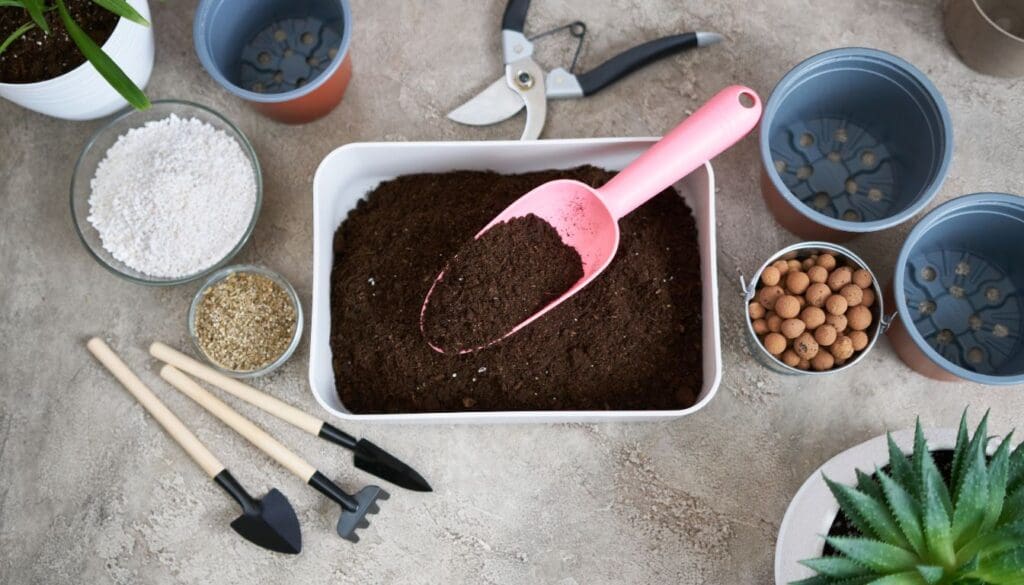
I always reach for well-draining soil for my tiny plants. Heavy, dense soil just holds too much water, and root rot is no fun.
For indoor plants, I grab a potting mix made just for them. For cacti or succulents, I’ll use something with extra sand or perlite.
Most stores have soil mixes labeled for these, so it’s not hard to find. I make sure every pot has drainage holes—otherwise, water just sits at the bottom and roots can rot.
Sometimes I’ll add a thin layer of pebbles at the bottom for good measure. Loose, light soil encourages root growth and happy plants.
If the soil stays wet between waterings, I’ll swap it for a lighter blend. It’s a small change, but it really helps my tiny plants thrive.
Creative Display Ideas for Small Spaces
Finding new ways to show off my tiny houseplants is half the fun. Even the smallest rooms can look greener with a little creativity.
Using Vertical Space
Vertical space is honestly a lifesaver when you’re short on room. I hang tiny pots from wall hooks and use floating shelves to stack plants above eye level.
This keeps tables clear and actually makes the space feel taller. Sometimes I’ll use wall-mounted planters or a grid for multiple small pots.
These work great in bathrooms, kitchens, or next to my desk. Hanging planters near windows give every plant a bit of sun.
For a quick fix, I’ll repurpose an old ladder or bookcase—each step or shelf is perfect for a few small favorites.
Grouping for Visual Impact
Grouping tiny plants together always looks bold in a small space. I use trays or shallow boxes to keep my plant clusters neat on a table or windowsill.
Mixing plant shapes and colors makes the group pop. I usually put taller ones in the back and shorter ones up front for a little depth.
Tiered plant stands let me show off several houseplants without hogging floor space. Sometimes I’ll mix up the colors and styles of pots for a more lively look.
When my plants are grouped, watering and moving them is just easier, too.
Frequently Asked Questions
Tiny houseplants are honestly some of my favorites—they’re easy to grow, don’t need much space, and just brighten up any corner. Most are low-maintenance and stay small for ages.
What are some low-maintenance small indoor plants suitable for any space?
Air Plants (Tillandsia) are top of my list since they don’t need soil and just need a mist or soak. Pilea Peperomioides and Fittonia Albivenis also thrive in small pots and don’t ask for much.
Baby Tears Plant is super soft and simple to care for. If you remember to water only when dry, String of Pearls is another easy pick.
How do I care for tiny potted plants indoors?
Tiny plants like indirect sunlight, not direct rays. I water when the top inch of soil feels dry.
Using small pots with drainage holes keeps overwatering at bay. A little plant food every month or two helps them along.
Which small houseplants are best for areas with low light?
Fittonia Albivenis (nerve plant) does well in low-light spots. Baby Tears Plant also gets by with just a bit of sun.
Air Plants can handle low light as long as they get some bright light every so often.
Can you suggest some plants that are small in size but big in appeal for tiny pots?
String of Pearls really stands out with its bead-like leaves. Pilea Peperomioides is adorable with its round, flat leaves.
Fittonia Albivenis has bold patterns that really pop in a small pot. Air Plants are memorable thanks to their quirky shapes and the endless ways you can display them.
What do people generally call tiny indoor plants?
Most folks call them mini houseplants, tiny houseplants, or just miniature plants.
Sometimes you’ll hear desktop plants or windowsill plants too, since they fit just about anywhere.
Are there any miniature plants that won’t outgrow a small space?
Absolutely! Baby Tears Plant and Fittonia Albivenis are both great picks—they stay small and won’t take over your shelf or desk.
Air Plants are another option if you want something compact. Honestly, if you’re after a plant that behaves itself, just look for varieties labeled “mini” or “dwarf”—that’s usually a safe bet.
Recommended Garden Supplies
| Product Image | Our Recommended Gardening Supplies | Check Offers! |
|---|---|---|
Top Top
Top
Top
Top
Top
Top
Top
Top | rePotme Houseplant and Tropical Classic Potting Soil Mix | Check Offer On Amazon |
 Top
Top
Top
Top
Top
Top
Top
Top | Espoma Organic Indoor Plant Food | Check Offer On Amazon |
 Top
Top
Top
Top
Top
Top
Top
Top | GooingTop LED Grow Light 6000K Full Spectrum Clip Plant Growing Lamp | Check Offer On Amazon |
 Top
Top
Top
Top
Top
Top
Top
Top | Soil Moisture Meter | Check Offer On Amazon |
 Top
Top
Top
Top
Top
Top
Top
Top | Govee Hygrometer Thermometer, Bluetooth Enabled! | Check Offer On Amazon |
 Top
Top | LEVOIT Humidifiers for Large Room(Best For Plants) | Check Offer On Amazon |
 Top
Top
Top
Top
Top
Top
Top
Top | Upgraded DIY Automatic Drip Irrigation Kit, 15 Potted Houseplants Support | Check Offer On Amazon |
 Top
Top
Top
Top
Top
Top
Top
Top | Stainless Steel Heavy Duty Gardening Tool Set | Check Offer On Amazon |
 Top
Top
Top
Top
Top
Top
Top
Top | Bonide Insecticidal Soap | Check Offer On Amazon |
 Top
Top
Top
Top
Top
Top
Top
Top | Bonide 32 oz Spray Neem Oil for Organic Gardening | Check Offer On Amazon |
 Top
Top
Top
Top
Top
Top
Top
Top | Garden Safe Fungicide | Check Offer On Amazon |

